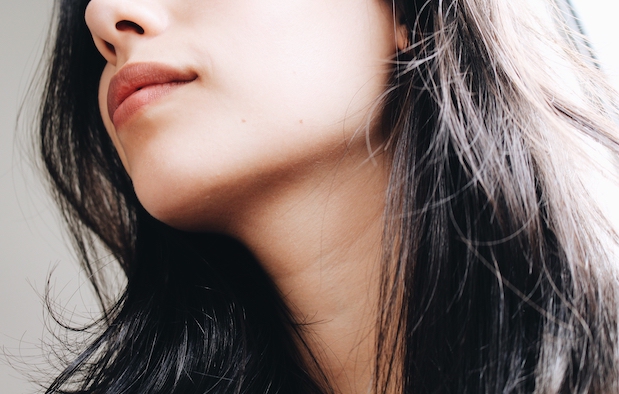
By now, if you haven’t heard about Botox, the cosmetic treatment that impacts muscles and is commonly used to prevent wrinkles, you’d have to have been living under a rock.
But what you might not know is Botox can be used to treat various other things. For example, some doctors will recommend Botox for people suffering from regular migraines. There are people who get Botox to inhibit excessive sweating. And you can get Botox in your jaw to help with teeth grinding.
FYI – I’m saying Botox as it’s the most common name we use for anti-wrinkle injections, but actually these days there are many different brand names, like Dysport for example. Botox is actually one brand name for botulinum toxin, a chemical that blocks the neurotransmitter acetylcholine, causing muscle paralysis that lasts for several months. Sounds hectic, right? It kind of is, but the human experience of it (at least for me) hasn’t been as hectic as it all sounded.
As a chronic grinder, I’ve long wanted to try Botox in my jaw. It’s not so much that I grind in my sleep like most people do, but that I clench my jaw through the day. Whenever I’m super busy (always) or stressed (um have you met me) I subconsciously clench my jaw – so hard and so often, in fact, that I’ll end up with a headache by around 3pm, wondering why my jaw is sore.

I had Botox in my forehead for a frown line I didn’t like back when I was 27. Since then, I’ve gotten it fairly regularly in that area. I felt comfortable enough with the treatment that I wanted to try Botox in my jaw next, after hearing that it could help with teeth grinding and clenching.
The idea behind jaw Botox is basically to weaken the over-stimulated masseter muscles (your chewing ones) so you literally can’t clench. You’ll still have the ability to chew food and all of that, but the strength of your masseters will be diminished, so ongoing clenching and grinding is harder for your body to do, and therefore it… doesn’t. That’s the theory, anyway.
Botox in your masseters can also slim your face down, and I’ll be honest, this made me even more interested. Often if you’re a teeth grinder, the masseters get so strong they can actually change your face structure. This is totally just an aesthetics thing, but for me personally I felt like my jaw was actually bigger on one side than the other, because my teeth don’t line up so the right side clenches harder than the left, if that makes sense. So I was keen to work on that, too.
I headed to Dr. Naomi, founder of The Manse Clinic in Paddington. She’s renowned in Sydney as one of the best, and while I’d had Botox before I was a little nervous about getting it in a new part of my face.
First, I sat down to get some before pictures of my face from all angles. I then went in to see Dr. Naomi. She asked me what I was looking for, and I explained that I clenched my jaw a lot and found I was getting headaches from it, as well as a tight, tense feeling in that area, especially around the afternoon.
Dr. Naomi explained that whenever she gets a new client, she asks a bunch of questions to determine their medical history and whether this treatment is right for them.
“We want to know their medical condition, for example if they had a history of bruxism (jaw clenching) and whether they have had any previous treatments, if they were happy with those results, etc. We would then do an examination of their face, look at and feel the size of their masseter muscles, and do a whole face design consultation, where we look at every level of their face from the bones through to the skin.”
This takes a while, which is probably a good thing – better than someone just winging it, right? This is an important point – never go and get any form of cosmetic treatment from a random. Do your research. Make sure the person you’re seeing is accredited and has a history of successful treatments. While Botox wears off, there are risks involved (which should always be outlined to you before treatment), and this means you need to choose who does yours wisely. None of that random “my mate is a beauty therapist, she does it in her home!” shit, OK?
From there, it was a few relatively painless small injections in my masseters, where I would clench my jaw, Dr. Naomi would find the muscle, and inject the Botox in. It’s two per side, so nothing really. The needle is honestly so small it feels like a tiny thorn prick. As a needle phobic person, it wasn’t a drama for me.
Once done she explained that unlike forehead Botox, my jaw muscles would take some time to respond to the treatment. It took around a month for me to really notice the difference. Basically, I felt less tense through the day. The headaches disappeared, and my jaw felt relaxed. It wasn’t something I was hyper-aware of at all times, just like the clenching wasn’t something I was aware of at all times. I just felt less tense, which was a welcome change.
As for the slimming effect, it came around the same time, too. I actually didn’t notice a huge change until Dr. Naomi sent through my before and afters when I returned for a follow up consult two months later.

You can see how my right side was a little bulkier than the left, but two months after the jaw Botox I had even muscles and more of an oval face. This wasn’t the priority for me but it was a welcome additional perk!
The only thing I’d say about jaw Botox is that as the treatment wears off (around six months in for me), if you haven’t gotten your clenching/grinding sorted on a psychological level you’ll just start doing it again – and those muscles will continue to build back up.
It’s not a long-term fix, basically. If you want to keep the relaxed feeling and the clenching under control, you have to actually work to stop doing it subconsciously. Checking yourself when you notice clenching and so on.
So, say you grind your teeth in your sleep – this is great as a starting point but if you want ongoing improvement, you’ll either need to keep returning for jaw Botox or you’ll have to fix the underlying issue with mouth guards, a psychologist, and/or whatever else works for you long-term.
There’s also the fact that for me, as the treatment wore off and the muscles built back up because I hadn’t fixed my underlying clenching issue, it was painful. Not in a “yeowch” way, just the sensation of tired muscles working hard. The tension came back with renewed force, because these debilitated masseters were working overtime to be strong enough for all my clenching.
There was a good 3-6 months there where I was feeling more tension in my jaw than ever, and resorted to massaging the muscles daily to relieve some of it.
Overall my verdict is this. Jaw Botox was a fantastic first step for me to get relatively quick results and relief. But I don’t think financially I can afford twice-yearly Botox to maintain that, nor am I super comfortable committing to that much cosmetic treatment. I would be fine to do it once yearly, which is around how often I end up getting my frown line done. So I think I need to incorporate some of the other regular treatments like gua sha and massage for relief.
I also now recognise the need to deal with the underlying issue of clenching. If I can get more of a hold on that, my masseters won’t be so tense. For now, I’m trialling a little post it that says “STOP CLENCHING YOU IDIOT” on my computer, because usually clenching for me is a response to stressful tasks at work. We’ll see how it goes.
If you’re interested in having a chat about jaw Botox, you can contact The Manse Clinic via their website here.







